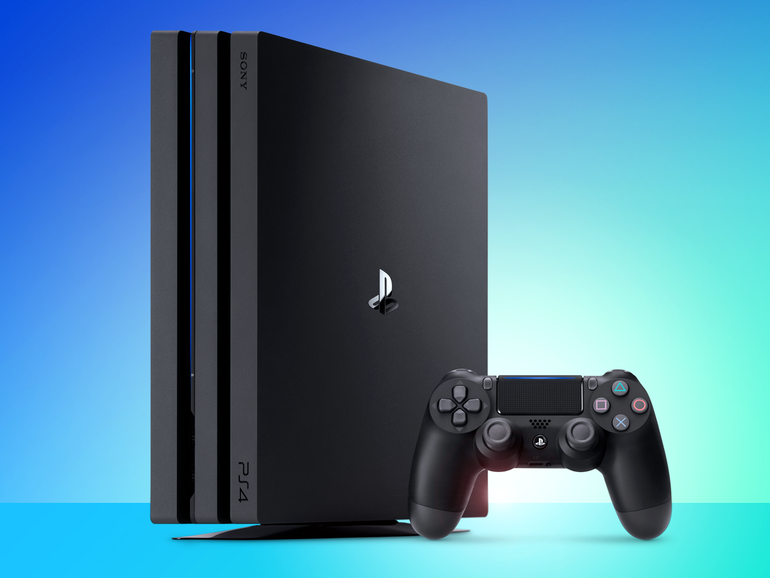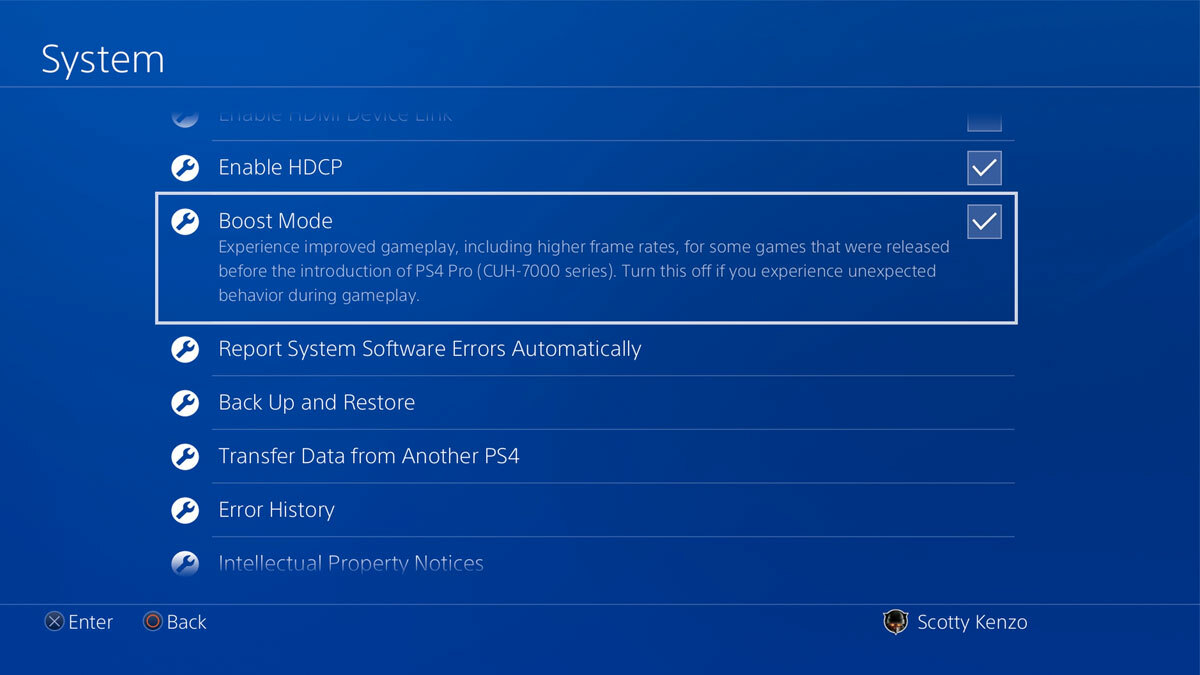PS4 Pro Boost Mode: how effective is it?
We find out if the console’s newly turbocharged engine make a tangible difference

For anyone with a PS4 Pro, the most exciting feature added with update 4.5 is probably Boost Mode.
This setting, accessible from the console’s System menu, uses (or at least attempts to use) the console’s extra power to enhance the performance of games that haven’t been updated for Pro performance. Boost Mode won’t add HDR lighting to these games, and won’t make any improvements to resolution via checkerboard upscaling, but it can help out the numerous PS4 titles that struggle to maintain their target frame-rates.
That doesn’t mean it’ll increase the frame-rate of games locked to 30fps – just that it can make sure they keep to those targets. So if you’re hoping that Boost Mode is going to give you that 60fps version of Destiny or Dark Souls III, get ready to be disappointed. Sony says it can also cut these games’ loading times, meaning less thumb-twiddling every time you die. I subjected a few titles to real-world testing (no fps counters here) to see how far Boost Mode goes in practice.
1) Bloodborne
This action RPG is one of the PS4’s most treasured exclusives (I’d personally rate it as both the system’s best, and one of the greatest games ever made) but even after multiple patches it’s still regarded as a bit of a clunker on the frames-per-second front – albeit infrequently.
Does the Boost wipe out those stutters in frame-rate, giving gamers the rock-steady 30fps the developer aimed for? Not quite – in a 20-minute dip back into the gore-sodden streets of Yharnam I did note the odd dropped frame here and there – but it’s certainly an improvement on the non-Boost version, delivering a smoother, stabler FPS count. Loading times also get a slight trim.
Loading time with Boost Mode: 10sec
Loading time without Boost Mode: 11sec
2) Dark Souls III
As might be expected given its similarities to Bloodborne (a third-person action RPG with unforgiving combat, developed by FROM Software), Dark Souls III is also known for having a somewhat uneven frame rate in its vanilla guise.
Heading to the High Wall of Lothric, I didn’t note any huge upsurge in smoothness, but rather a steadying of the frames-per-second ship. There seem to be fewer instances in which the frame-rate noticeably stutters – making a swift, sweeping pan around the detailed battlements at the same time as a dragon is spewing flames everywhere, for instance. Again, though: if you’re expecting huge improvements, think again.
Loading time with Boost Mode: 18sec
Loading time without Boost Mode: 19sec
3) Everybody’s Gone to the Rapture
I hadn’t played this beautifully affecting indie game since its 2015 release, and was glad for an excuse to re-explore the painstakingly created (but chillingly deserted) Shropshire village of Yaughton – perhaps with a smoother frame-rate this time?
Having played sections with Boost Mode both on and off, I can’t detect any massive improvement. There are frame-rate stutters in both modes, and if Boost does anything for the fps, it’s likely only measurable with tech, not the naked eye. Still, there’s a decent cut in the loading time…
Loading time with Boost Mode: 58sec
Loading time without Boost Mode: 1min 7sec
4) The Witcher 3: Wild Hunt
CD Projekt Red has done a fantastic job of tweaking their epic RPG since its release a couple of years ago, and the major slowdowns that plagued it for the first few months are long forgotten. I’d heard, though, that Boost Mode would work to iron out any remaining kinks, so once again fired it up and guided Geralt through an hour or two of adventuring to see if I noticed any major improvements.
At the risk of sounding like a broken record, any fps improvement here is minor. The game now runs quite smoothly in non-Boost Mode (at least in the sections of Velen I visited), and repeatedly switching between the two, I couldn’t see any performance leap from Boost. Loading times do get a slight trim though, which is always helpful.
Loading time with Boost Mode: 1min 13sec
Loading time without Boost Mode: 1min 20sec
5) Oddworld: New ’n’ Tasty
A 2D platform game with 3D visuals, Oddworld runs well both before and after Boost Mode has been turned on. As with most games I looked at, there’s a notable cut in load times, though.
Loading time with Boost Mode: 16sec
Loading time without Boost Mode: 20sec
Verdict

If you’re expecting Boost Mode to usher in wholesale changes akin to swapping out a PC’s two-year-old GPU with a spanking GeForce GTX 1080 Ti, you’re going to be disappointed.
The improvements here are slight: in the games I’ve tested, I can only see incrementally tiny frame-rate increases, if any. Load times are shorter across the board, yes – but not massively so. However, I think it pays to view Boost Mode in its proper context: as a bonus feature rather than a core one.
If a developer desires, they can properly retune their title for the PS4 Pro, adding significant detail and frame-rate enhancements, and in some cases, HDR lighting. We’ve seen that happen even with older games such as Middle-earth: Shadow of Mordor and The Last of Us, and indie games like Firewatch, so there’s no reason it couldn’t happen with any of the above titles.
It’s also worth noting that, in the five games I tested, I didn’t notice any weirdness or glitches caused by Boost Mode (although Sony cautions that these could occur). So Boost Mode shouldn’t be looked on as a disappointment, really – it was never going to be the panacea of frame-rate obsessives’ dreams, and it does make improvements to performance, however slight they might be.



